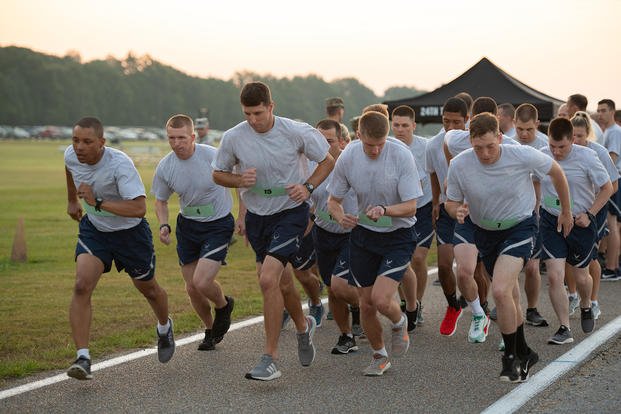When people ask for help, they often tend to look for quick answers or tips to help them with training for a specific goal. Sometimes, people need more help than a workout of the day and just do not know it. You need a full-blown program or plan specifically developed to help you answer the multiple questions that follow when given a workout idea for a day of training.
Here is an email with a series of questions that are typical of someone who wants to train for something, yet is struggling with the myriad training options available.
Below are his questions with my answers:
My name is John. I am an 18-year-old college student hoping to one day become a SEAL. This email will cover a few questions I have on the process, as well as the level of training I should be at prior to enlisting. I am running 20 miles a week. I do three four-mile runs on "hilly" terrain, usually at an 8:30 pace for a two-mile run, either on the treadmill or track, at a goal pace of 6:00-6:30, and one long, slow, distance run of six or eight miles usually at around an 8:45 pace.
Stew: Not bad. Building a nice foundation is the most important thing to do right now. And also realize that you have to train to get to training, then focus on getting through training.
John: I have done quite a bit of research on BUD/S and preparation training. That being said, do you agree with the prescribed 40 miles a week prior to beginning BUD/S training? Follow up, how should that be broken down? Five eight-mile runs a week? Or different?
Stew: Thirty to 40 miles a week is sufficient, but you have to progress to that level of running over time. This will take months, as most people increase mileage by 10%-15% per week.
That involves 5-6 days a week of running. Some are longer runs, and some are shorter and faster so you can complete the 1.5- and four-mile timed runs at a fast pace. (A sub-six-minute pace for the 1.5-milie run and a sub-seven-minute mile pace for the four-mile timed run are recommended.)
You also may want to periodize your training, since you have 3-4 years of time before getting to BUD/S. I would not recommend year after year of 30-40 miles per week. Cycle through your workouts, such as with periodization training.
John: What is the best way to get faster on longer runs? I am having trouble dropping my pace down. Right now, I consistently run just over eight-minute miles on my four-mile runs. I know this is slow, and I would like to be at least under seven minutes per mile before I enlist. I have never been much of a runner. I am 5'7" 175 and stocky, but not fat -- I played football in high school and gained muscle mass, which attributes to my weight. Before I started running every day, which was about five months ago, I had never run more than two miles and rarely without stopping. I am definitely not built like a runner at all, but I know with the right training and work ethic, I can achieve my goal. So what do you recommend in my case?
Stew: Progress and practice shorter interval workouts, like three miles of quarter- and half-mile intervals. Run at a goal or faster than goal pace to build faster speed endurance for longer runs.
See related articles on running workouts:
John: Sorry -- I also have a question regarding strength and muscle endurance training. Do you recommend any weightlifting? Or just a lot of intense calisthenics, such as push-ups, pull-ups, sit-ups, dips, etc.?
Stew: Sure, but have you not seen what I write about? I have articles, ebooks, books and even apps that feature lifting, calisthenics, running, rucking, swimming and using other tools for training (TRX, tires, sledgehammers, etc.).
John: My swimming background is average. I can swim well but have never practiced any specific strokes, and I have never competed at any level. I am learning the CSS with the help of your app and YouTube videos.
Stew: Sounds like you need a program with all of this built into it.
John: What should my swimming workouts consist of? Five hundred yards every day?
Stew: Five hundred yards should be a warmup, but you may have to build up to that. I would recommend swimming 4-5 days a week and try to get at least 1,000 yards every day for starters. You can break that up into 10 x 100 yards, or even 20 x 50-yard sets. Just get it done.
John: How often should I practice with fins? I have no access to the ocean or lakes nearby.
Stew: Swim in a pool with fins. That is fine. But learn how to swim the CSS without fins first, then swim with fins on leg days 2-3 times a week.
John: I know this email is a lot to ask, and I'm sure you get hundreds of emails a day. If you will, I appreciate you reading this email and answering these questions.
Stew: Not a problem. It made for a good Q-and-A article. Also read this need-a-plan article, because you need a plan that answers all of these questions, not a bunch of workouts thrown together with tips.
Stew Smith is a former Navy SEAL and fitness author certified as a Strength and Conditioning Specialist (CSCS) with the National Strength and Conditioning Association. Visit his Fitness eBook store if you're looking to start a workout program to create a healthy lifestyle. Send your fitness questions to stew@stewsmith.com.
Want to Learn More About Military Life?
Whether you're thinking of joining the military, looking for fitness and basic training tips, or keeping up with military life and benefits, Military.com has you covered. Subscribe to Military.com to have military news, updates and resources delivered directly to your inbox.



















